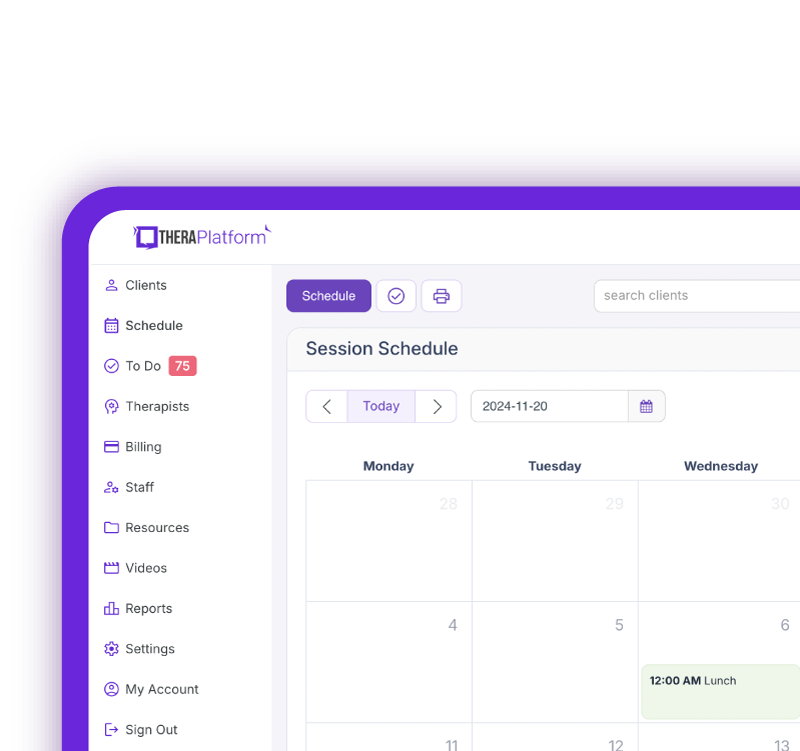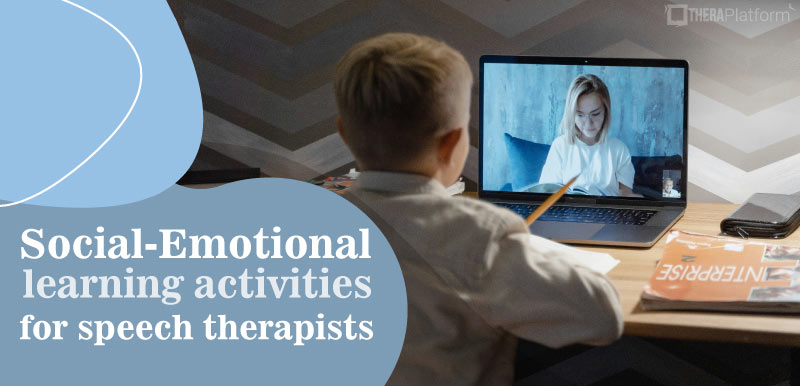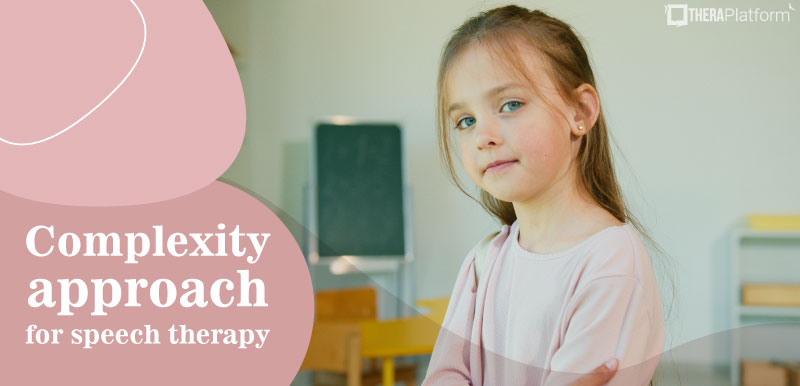Speech delay vs. autism

Speech delay vs autism can be distinguished by speech-language pathologists (SLPs). Both can manifest with delayed speech, but they have distinct key differences.
Summary
- Speech delay and autism can both involve delayed language development, but autism includes broader social communication challenges and repetitive behaviors not typically seen in isolated speech delay.
- Accurate differential diagnosis is critical, as each condition requires distinct assessment strategies and individualized therapy approaches for optimal outcomes.
- SLPs play a key role in identifying red flags, collaborating with other professionals, and guiding referrals to ensure children receive the right interventions early.
- Therapy for speech delay focuses on language stimulation and articulation, while autism therapy emphasizes functional communication, social skills, sensory integration, and AAC tools when needed. Download our free articulation guide.
- By leveraging an EHR like TheraPlatform for efficient documentation and claim submission, therapists can keep treatment plans organized.
Streamline your practice with One EHR
- Scheduling
- Flexible notes
- Template library
- Billing & payments
- Insurance claims
- Client portal
- Telehealth
- E-fax

A speech delay is a developmental lag in a child’s ability to produce speech sounds or use language appropriately for their age.
Autism is a neurodevelopmental disorder characterized by challenges in social communication and restricted repetitive behaviors. Speech delays are common in children with autism, though the disorder includes a broader range of developmental differences.
Speech delay vs autism differentiation is essential for accurate diagnosis, which can guide effective intervention and help lead to the best possible outcomes for the child.
Speech delay vs autism key differences
There are several key differences between speech delay vs autism. A thorough understanding can help SLPs develop the most appropriate treatment plan for a child.
Speech delay
- Primarily affects speech production, vocabulary development, and/or grammar.
- Children generally show typical social interactions and nonverbal communication skills.
- The child typically demonstrates the intent or desire to communicate but may not communicate verbally.
Autism
- Involves broader challenges with social communication and interaction
- Children often show difficulties such as:
- Limited eye contact
- Reduced joint attention (shared interest in an activity or object with another person)
- Lack of reciprocal social interactions
- Often includes restricted interests or repetitive behaviors (such as rocking or hand-flapping).
- These behavioral and social differences accompany a speech delay in autism.
Speech delay vs autism shared features
There is an overlap between speech delay vs autism, which can cause challenges for SLPs in making a differential diagnosis between the two disorders.
In both conditions, a child can present with delayed speech milestones. Limited verbal output in young children in both disorders may initially cause speech delay and autism to appear similar.
Parental concern about a child’s language development can prompt referrals for early intervention in speech delay cases and autism cases.
Practice Management + EHR + Telehealth
Manage more in less time in your practice with TheraPlatform

Assessment strategies for speech delay vs autism
SLPs can use a variety of assessment strategies to evaluate a child with speech delay vs autism.
Speech Delay assessment
As part of a comprehensive speech and language assessment, the SLP examines speech sound development, receptive language, expressive language, oral motor skills, and motor planning for speech production.
Autism assessment
If autism is suspected, the SLP evaluates speech and language skills, pragmatic language skills (the use of language in social contexts), joint attention, play behaviors, social interaction, and sensory responses. The therapist also looks for the presence of restricted or repetitive behaviors (RRBs).
Assessment tools
Standardized assessments can provide valuable insights for therapists assessing speech delays and autism.
- The Modified Checklist for Autism in Toddlers (M-CHAT) helps identify early signs of autism.
- The Clinical Evaluation of Language Fundamentals - Preschool (CELF-P) or the Preschool Language Scale (PLS) are commonly used to assess speech and language skills in young children.
- Standardized assessment tools, clinical observations, and caregiver reports help speech-language pathologists differentiate between the presence of a speech delay and autism.
Free Resources for Therapists
Click below and help yourself to peer-created resources:

Therapy implications for speech delay vs autism
An accurate diagnosis of speech delay or autism allows speech therapists to develop individualized, appropriate treatment plans based on the child’s needs. Unique intervention approaches can be used in children who have a speech delay and for those with autism.
Speech Delay intervention
For children who have a speech delay, speech therapy typically focuses on the following:
- Language stimulation strategies such as modeling and repetition.
- Articulation exercises to improve the production of age-appropriate speech sounds.
- Parent coaching to encourage language development during daily activities at home.
Autism intervention
Speech therapy for children with autism may incorporate the following:
- Emphasize functional communication skills, such as requesting and expressing basic needs.
- Social communication goals, including joint attention and turn-taking.
- Sensory integration techniques that can help regulate a child, allowing them to remain engaged in therapy sessions.
- Alternative and Augmentative Communication (AAC) tools such as high-tech speech-generating devices and low-tech picture exchange communication systems (PECS) can facilitate functional communication skills.
Collaboration and referral for speech delay vs autism
An interdisciplinary approach is critical when making a differential diagnosis between a speech delay and autism. Speech-language pathologists play a key role in a multidisciplinary team.
SLPs can collaborate with professionals such as:
- Psychologists for diagnostic autism evaluations.
- Occupational Therapists (OTs) for support in the area of sensory integration.
- Developmental pediatricians for a comprehensive evaluation of the child’s development.
Referral guidelines
Speech therapists should consider referring a child for autism evaluation if they observe “red flags” during an assessment, including:
- Lack of joint attention or social engagement.
- Restricted interests or repetitive behaviors persisting alongside speech delays.
- Reduced social communication skills, including limited verbal and nonverbal communication use with others (e.g., gestures, facial expression, or eye contact).
Additional resources for speech delay vs autism
Speech therapists are crucial in identifying distinguishing features between a speech delay and autism. Skilled clinical observations, assessment, and collaboration with other professionals can lead to providing appropriate and effective early intervention.
An accurate early differential diagnosis between speech delay and autism can ensure that a child receives the appropriate therapies and addresses their specific needs. This support can lead to improved long-term outcomes for children, helping them communicate and thrive.
Streamline your practice with One EHR
- Scheduling
- Flexible notes
- Template library
- Billing & payments
- Insurance claims
- Client portal
- Telehealth
- E-fax

Resources
TheraPlatform is an all-in-one EHR, practice management, and teletherapy software built for therapists to help them save time on admin tasks. It offers a 30-day risk-free trial with no credit card required and supports different industries and sizes of practices, including speech-language pathologists in group and solo practices.
More resources
- Therapy resources and worksheets
- Therapy private practice courses
- Ultimate teletherapy ebook
- The Ultimate Insurance Billing Guide for Therapists
- The Ultimate Guide to Starting a Private Therapy Practice
- Mental health credentialing
- Insurance billing 101
- Practice management tools
- Behavioral Health tools
Free video classes
- Free on-demand insurance billing for therapist course
- Free mini video lessons to enhance your private practice
- 9 Admin tasks to automate in your private practice
References
de Lima, T. A., Zuanetti, P. A., Nunes, M. E. N., & Hamad, A. P. A. (2023). Differential diagnosis between autism spectrum disorder and other developmental disorders with emphasis on the preschool period. World Journal of Pediatrics, 19(8), 715-726. DOI: https://link.springer.com/article/10.1007/s12519-022-00629-y
Maksimović, S., Marisavljević, M., Stanojević, N., Ćirović, M., Punišić, S., Adamović, T., ... & Subotić, M. (2023). Importance of Early Intervention in Reducing Autistic Symptoms and Speech–Language Deficits in Children with Autism Spectrum Disorder. Children, 10(1), 122. DOI: https://www.mdpi.com/2227-9067/10/1/122 .
Vogindroukas, I., Stankova, M., Chelas, E. N., & Proedrou, A. (2022). Language and speech characteristics in autism. Neuropsychiatric Disease and Treatment, 2367-2377. DOI: https://www.tandfonline.com/doi/full/10.2147/NDT.S331987



